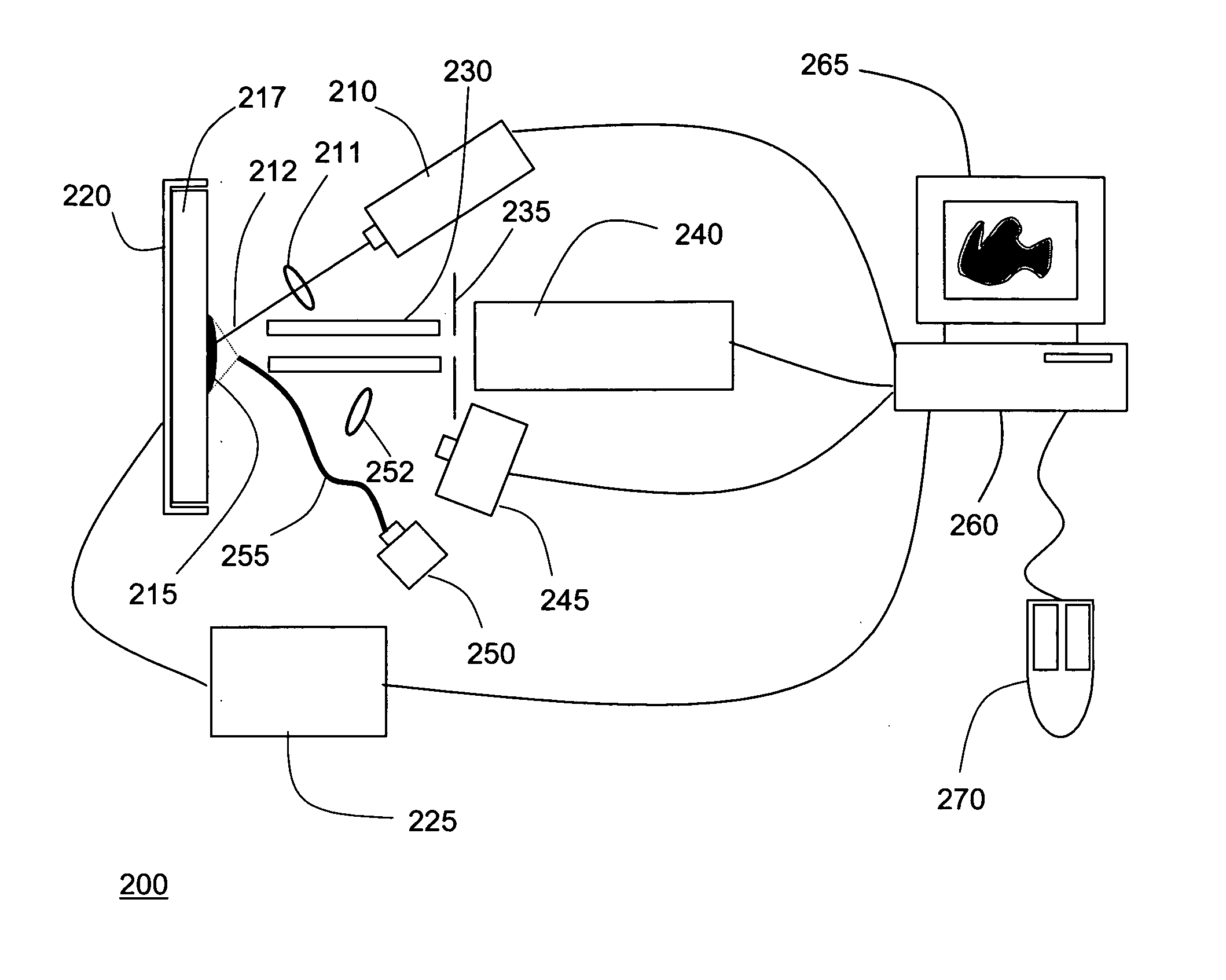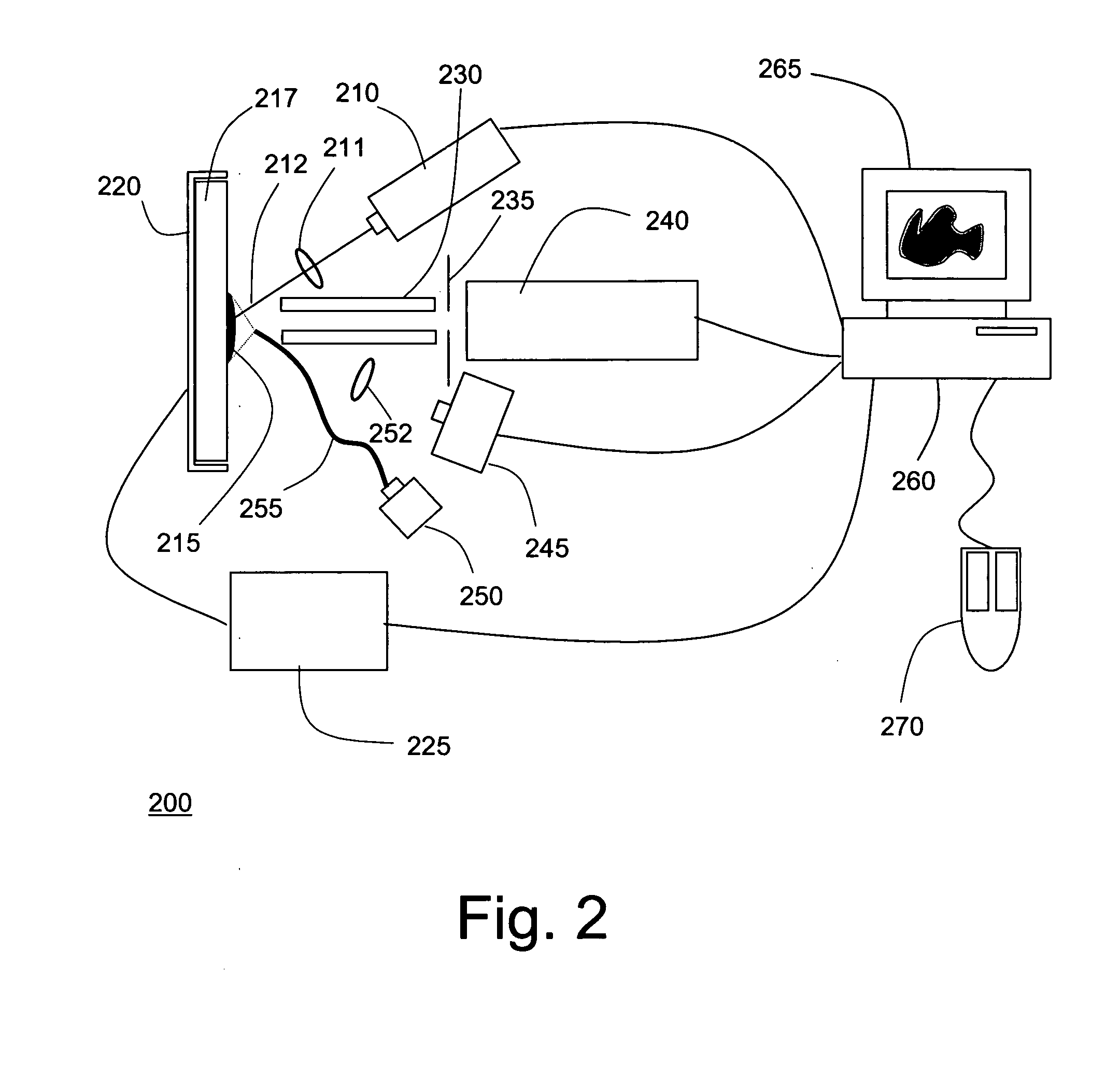Reduction of scan time in imaging mass spectrometry
a mass spectrometry and scan time technology, applied in the field of mass spectrometry, can solve the problems of compromising the quality of mass spectral data, requiring substantial modification of hardware components, and requiring several hours or even days of instrument time to generate mass spectral images, so as to reduce the spacing of target regions, improve the likelihood of locating highly differentiated areas, and significantly improve the effect of efficiency
- Summary
- Abstract
- Description
- Claims
- Application Information
AI Technical Summary
Benefits of technology
Problems solved by technology
Method used
Image
Examples
Embodiment Construction
[0020]FIG. 2 is a symbolic diagram showing the components of an exemplary mass spectrometer 200 in which the techniques of the present invention may be implemented. As shown, MS system 200 includes a laser 210 positioned to direct a pulsed beam of radiation 212 onto a portion of a tissue sample 215 arranged on sample plate 217. A sample plate holder 120 is provided with a positioning mechanism, such as an X-Y stage, to align the laser spot (the impingement area of the laser beam) with a selected region of sample plate 115. Sample plate holder 220 is typically positioned in the X-Y plane (the plane defined by sample plate 217) by means of stepper motors or similar actuators, the operation of which is precisely controlled by signals transmitted from controller 225. The radiation emitted by laser 210 will typically be focused by at least one lens or equivalent optical element 211 disposed between the laser and the tissue sample. In alternate configurations, alignment of the laser spot ...
PUM
| Property | Measurement | Unit |
|---|---|---|
| thickness | aaaaa | aaaaa |
| distance | aaaaa | aaaaa |
| mass spectrometric analysis | aaaaa | aaaaa |
Abstract
Description
Claims
Application Information
 Login to View More
Login to View More - R&D
- Intellectual Property
- Life Sciences
- Materials
- Tech Scout
- Unparalleled Data Quality
- Higher Quality Content
- 60% Fewer Hallucinations
Browse by: Latest US Patents, China's latest patents, Technical Efficacy Thesaurus, Application Domain, Technology Topic, Popular Technical Reports.
© 2025 PatSnap. All rights reserved.Legal|Privacy policy|Modern Slavery Act Transparency Statement|Sitemap|About US| Contact US: help@patsnap.com



